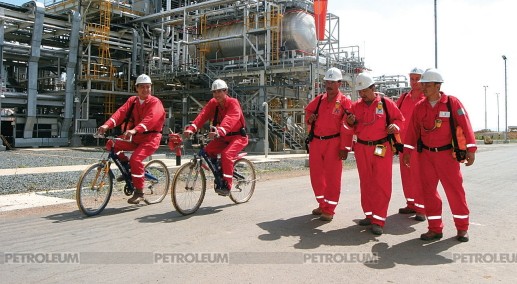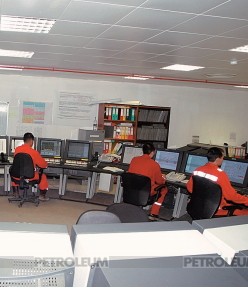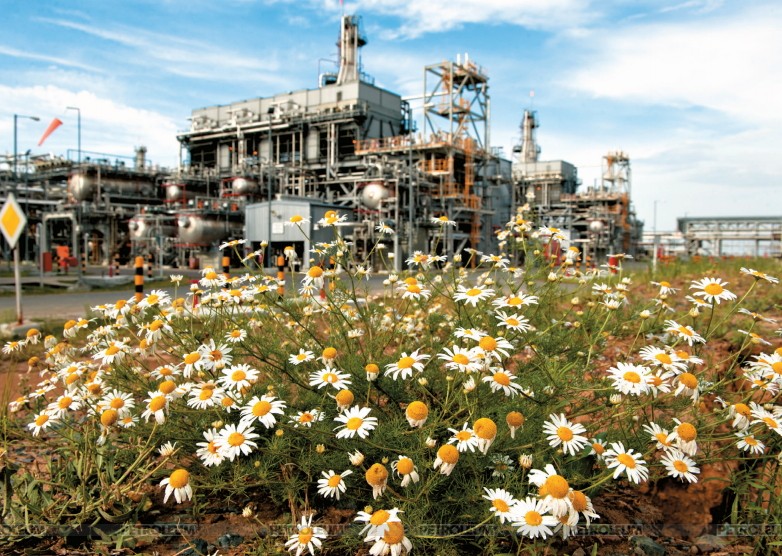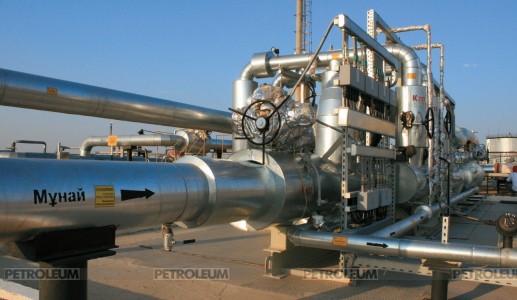Focus of the Issue: Russian Vector
LUKOIL's Castling in Kazakhstan
Artur Shakhnazaryan, AtyrauOn April 15, the Russian Company LUKOIL announced its’ secession from the Caspian Investment Resources Ltd., the joint venture with Chinese Sinopec in Kazakhstan. LUKOIL sold out its’ share to the Chinese partner of the joint venture for $ 1.2 bln. Purchase and sale Agreement was signed on 15th of April. The price is subject to a number of adjustments on the date of the deal completion which is planned to be finalized before the end of this year. Upon result of the deal, Sinopec consolidates 100% of Caspian Investment Resources Ltd.

Historical horizon
The history of the partnership of Caspian Investment Resources (CIR) starts from 2006, when Lakshmi Mittal, the Indian billionaire and the world's largest founder of steel Empire, decided to help his fellows from the Indian national oil and gas company (ONGC) to acquire oil assets in Kazakhstan. Just at that time, owing the iron and steel plant near Karaganda city he entered the oil business and bought a 50% stake in CIR held by Russian LUKOIL. CIR, in its’ turn, acquired its assets in 2005 as a result of the take-over of formally Canadian company Nelson Resoursec beyond which the Kazakhstani owners were seen quite clearly. However, the combination conceived in advance by Hindus failed, and ONGC refused to purchase Mittal’s assets. Therefore, in 2010, Mittal Investments sold out its’ share to the Chinese Sinopec after LUKOIL refused to reacquire this share using the right of priority.
Caspian Investment Resources, through a number of joint ventures, owns various shares in four hydrocarbons production projects in Kazakhstan, such as Alibekmola and Kozhasai (on a parity basis with KazMunaiGaz), North Buzachi (50% of the Chinese CNPC) and Arman (50% of Shell company), as well as 100% of the development project of Karakuduk field. The total volume of recoverable reserves of these fields is 160 mln. tons of hydrocarbons. In 2013, the share of LUKOIL in these projects for the production of marketable hydrocarbons amounted to 10.2 mln. barrels of oil equivalent. “The deal is made to optimize the foreign portfolio of LUKOIL hydrocarbon assets”, - the Russian company said. Completion of the deal will require the fulfilment of a number of preconditions. In particular, it is necessary to obtain approvals of the State authorities of Kazakhstan. Final closure of the deal is expected by the end of the year 2014.

In a press release of the Russian company with regard to the sale, it is emphasized that LUKOIL continues to participate in the projects related to the production of hydrocarbons in Kazakhstan, such as Kumkol, Karachaganak and Tengiz projects. The company is also a member of the Caspian pipeline consortium. “We continue to work in Kazakhstan and are interested in increasing investments in this country”, - Vagit Alekperov, the Head of the company, declared in his speech. According to the press release, LUKOIL suggests to redirect funds to the projects in the sphere of geological exploration, including those in the Kazakhstani sector of the Caspian Sea. In addition, it is planned to construct a plant for the lubricants refining near Almaty city.

Hidden springs
Meanwhile, the company's statement of the reasons of its decision to secede from CIR is not quite convincing. The matter is that CIR has a very attractive package of projects in its pocket. The reserves of the only Alibekmola field exceed 50 mln. tons. In the North Buzachi object it is possible to have a stable flowrate of 1 mln. tons of oil per year. However, this oil is very heavy, by its composition it is more like a fuel oil. Therefore, it is problematic enough to carry out production processes there without any special technologies. However, it is worth to pay attention to the fact that within the recent years the production level decreased substantially on the CIR projects: almost two times. But, nevertheless, to sell its profitable assets and change it to the risky geological exploration (as follows from the press release logic) is quite unusual.
Most likely, there are some reasons for such a decision. First, the Chinese partners offered a higher price. Sinopec paid more money than these assets actually cost at this stage. In 2010, the first 50% of the joint venture the Chinese purchased for $ 500 mln., undertaking the additional obligation to pay the CIR’s debt in the amount of $ 160 mln. Thus, the purchase of the second half of the asset, by the cost which is twice higher, is not quite understandable. Especially, if to consider that the oil reserves decreased and the volumes of production generally dropped down. Following the logic, the price, vice versa, should be much lower. The motives of the Chinese are easy to understand. The volumes of oil pumped into the Kazakhstani-Chinese oil pipeline, where the expansion project is nearly completed, are not enough. Along with this, the strategic for Kazakhstan and China question of marketing of oil sold by CIR shall be solved. From this point of view, the deal is profitable for all - Kazakhstani, Chinese and Russian parties. The U.S. is the only country which may not like it, as it very jealously monitor the growth of the economy of its main competitor and increase of its occurrence in Kazakhstan.
As shown in the practice, China does not spare efforts or money to access the resources of Central Asia. The most striking example is a long-term and patient invasion of the Chinese into the Kashagan project. And another postponement of the commencement of commercial production at Kashagan for another two years, as expected this time, just might be a catalyst for the deal between Sinopec and LUKOIL. China needs to get oil as soon as possible, and the Kashagan oil in the Kazakhstani-Chinese pipeline could be temporarily replaced by the oil from the CIR fields. It is predictable that the purchase and sale deal will be accepted and approved by the Kazakhstani part. Moreover, it seems that Astana has persuaded LUKOIL to make this decision. This fact is confirmed by the sources in the RK Ministry of oil and gas. However, the final decisive motive for LUKOIL company might possibly be an eye-opener of the Astrakhan region.

Astrakhan sensation
On the next day after conclusion of the deal with the Chinese company, Sergey Donskoy, the Minister of natural resources of Russia, advised on the largest, since the collapse of the Soviet Union, discovery of Velikoye field in the territory of the Caspian Sea basin. For today, it is the largest field of the Astrakhan region in the eastern part of the Kharabalinsky district. Up to now, it was believed that such a major discovery was Kashagan.
Two year ago it was reported on the discovery of the field in the Kharabalinsky district in the East of the Astrakhan region. The initial evaluation of the field reserves carried out by the experts was 42 mln. tons, however, it was noted that upon the results of additional research the volumes of reserves could be much higher. “The success of the geological exploration activities is a discovery of the oilfield, named Velikoye, in the Tambov licensed area of CJSC Neftegazovaya companiya AFB. I am sure that after carrying out of the recoverable oil reserves evaluation, the results will be overwhelming”, - Alexander Zhilkin, the Governor of the Astrakhan region, declared in March 2013. Later, Konstantin Markelov, the Head of the Government of the region, told about the possibility of increasing the reserves estimations up to 140 mln. tons, which would make Velikoye field to be one of the largest fields of the Astrakhan region. The current revaluation makes Velikoye field to be the largest oilfield in Russia discovered since the collapse of the Soviet Union.
The reserves of the discovered Velikoye field valued at 300 mln. tons of oil by the C2 category. The reserves have been included into the balance of the State Reserves Committee of Russia. The C2 category means that not less than 300 mln. tons of recoverable reserves are preserved in one deposit only. And it is clear that the number of deposits is more than one. In brief, we can already assume that 300 mln. tons is not the limit. As a minimum, Velikoye field can be compared with the Kazakhstani Tengiz. The field was discovered just a few kilometers away from the Russian and Kazakhstani border, at the intersection of the boundaries of Atyrau and West-Kazakhstani regions. So close that Kazakhstan could reach it.



